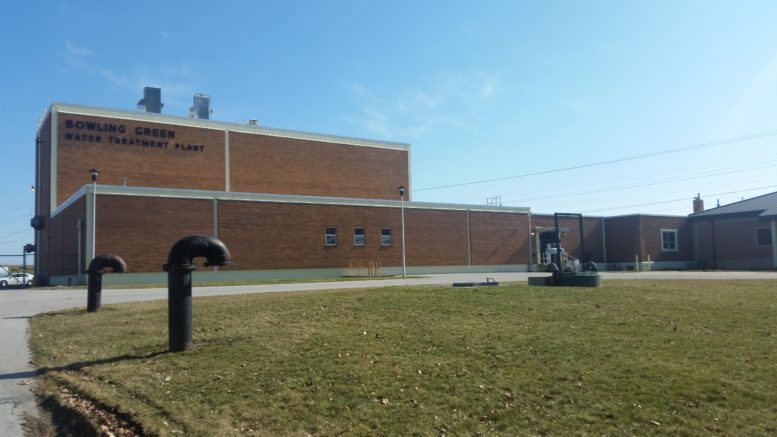By JAN LARSON McLAUGHLIN
BG Independent News
While Toledo is fighting to hang on to its water customers, Bowling Green is adding customers that are jumping ship and looking for more reasonably priced water.
Last month, the village of Waterville started getting its water from Bowling Green.
“Waterville approached us,” Bowling Green Utilities Director Brian O’Connell said. The village had abandoned its own water plant in the 1980s. “They were a customer of Lucas County, and Lucas County is a customer of Toledo.”
But big water rate hikes proposed in 2014-2015 from Toledo led Waterville to search for other sources.
“Waterville was looking for different options, to explore what the possibilities were,” O’Connell said. “One of those options was to put a pipe under the river to the Bowling Green Water Treatment Plant.”
Bowling Green had the extra water capacity, more reasonable rates, and was willing to give Waterville a 25-year contract compared to Toledo’s offer of a nine-year deal.
“We had additional capacity that could meet their need,” O’Connell said. There were no capital costs for Bowling Green since Waterville put the pipeline under the river to link up along Forst Road to a main from Bowling Green’s water treatment plant.
“Waterville assumed all the capital costs and the debt,” and Bowling Green just has to treat more water, O’Connell said.
“It made sense for both communities to do the project. It’s good for our revenue stream,” he said.
The city has a “wholesale contract” to sell the village about 500,000 gallons a day. Bowling Green already treats 4 to 5 million gallons of water a day, with that peaking to 6 to 8 million gallons in the summer.
Bowling Green water is already sold to many communities outside the city, some supplied through city lines and others through Northwestern Water and Sewer District lines. Those towns getting BG water include Tontogany, Haskins, Grand Rapids, Portage, Rudolph, Weston, Milton Center, Custar, Jerry City, Cygnet, Hoytville, Bloomdale and Bairdstown.
The water treatment plant, which sits on Ohio 65 along its water source, the Maumee River, has some additional capacity remaining. But city officials have not been approached by any other Toledo water customers wanting to switch suppliers.
According to O’Connell, the plant could supply roughly 3 million more gallons a day using the plant’s current footprint.
The city is looking to expand its microfiltration units so the water quality consistency is greater. An EPA loan is being sought to help with more improvements.
“We’re always looking for ways to improve the water plant process,” O’Connell said. “We’ve tried to not sit back, but tried to make it better.”

